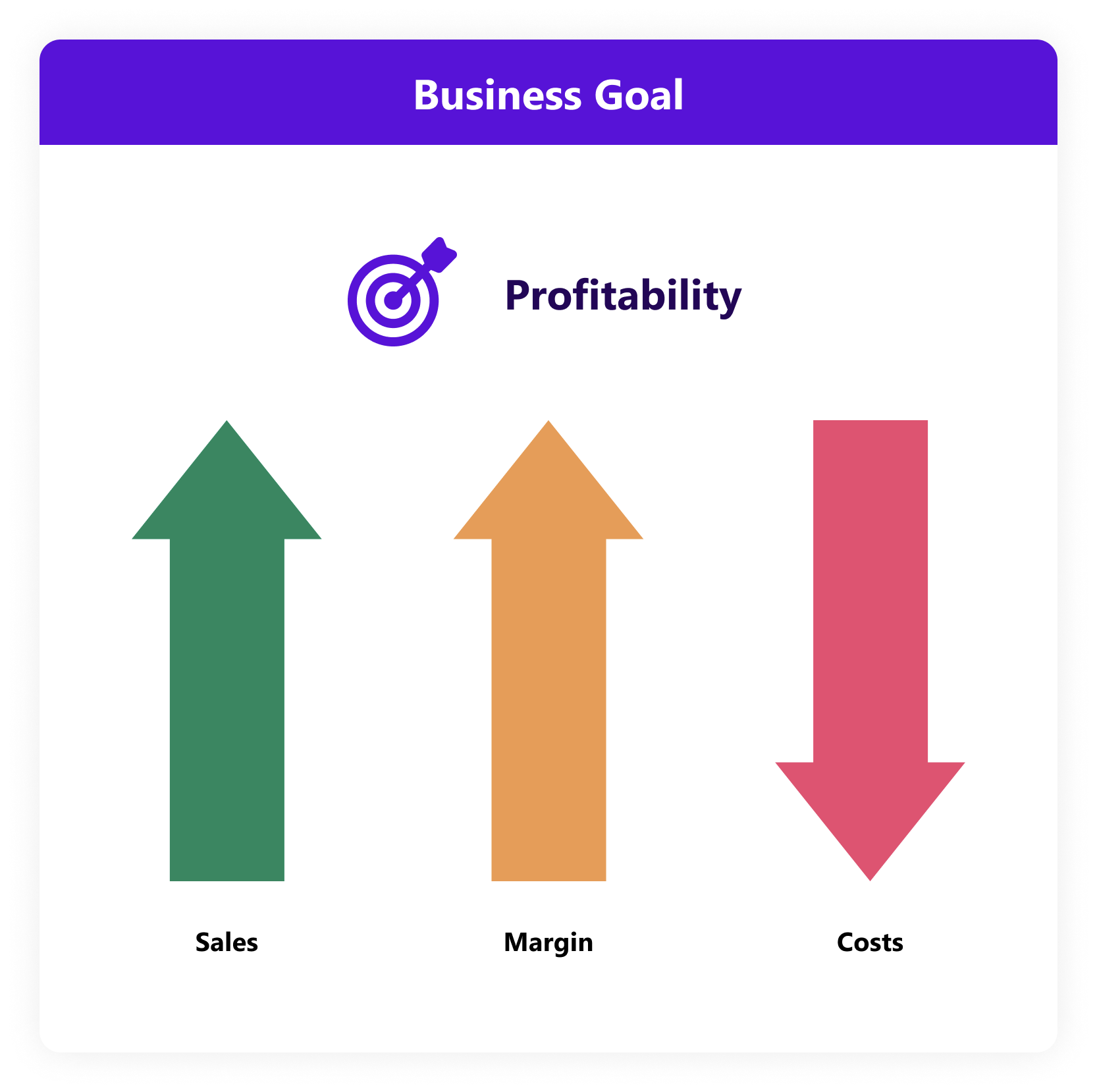¶ Business Goals
¶ What it is
Whether our product performance fits the business goals is essential for deciding future steps. Usually, business goals consist of two different types and contribute to the ultimate goal of profitability:
1) Contributes to revenue uplift
2) Contributes to cost saving
And logically, the product we build should clearly and directly fit into either of these two results so we can call it aligned with the business goal.
¶ Why it is useful
The business goal is always the overarching criteria of directional decisions. Product management serves the business goal. Business-driven goals focus on revenue, growth strategies, hiring and development, and cost-saving process improvements. There could be exceptions, such as this company wanting to focus on ESG and income, etc., becoming less critical. However, maintaining sustainable business goals is always what's mentioned above.
¶ When to use it
Usually, business goals are set based on company strategy and communicated well from management to the working team. The product management team is no exception. They will leverage their judgment and provide quantitative and qualitative information to decide.
¶ Who is involved
Business goals for the product are mainly the responsibility of the product management team. Yet, other stakeholders get involved when the final decision impacts other stakeholders, e.g., the business development and marketing team.

¶ How is it done
- Set and Align: Ensure clear business goals for the product, aligned with the larger company strategy and under input from top management, which drives the product team and process.
- Review: Review the performance against business goals at least quarterly and the definition of the business goals at least annually to ensure that these stay aligned as the company and product develop over time.
- Measure: Ensure that your analytics and measurements directly feed back into proving the product's value against the set business goals. Management reviews will determine the future of the product, and you want to articulate a clear case in those meetings.
¶ Do's & Don't
Do's
- Align product business goals closely with company strategy and goals.
- Ensure you measure and prove value against those goals.
- Ensure top management is aware and agrees to your product business goals and team members are knowledgeable and follow them.
Don't
- Don’t try to hit too many goals with one product. Typically a product either focuses on productivity and cost savings or on generating new revenues. Focus.